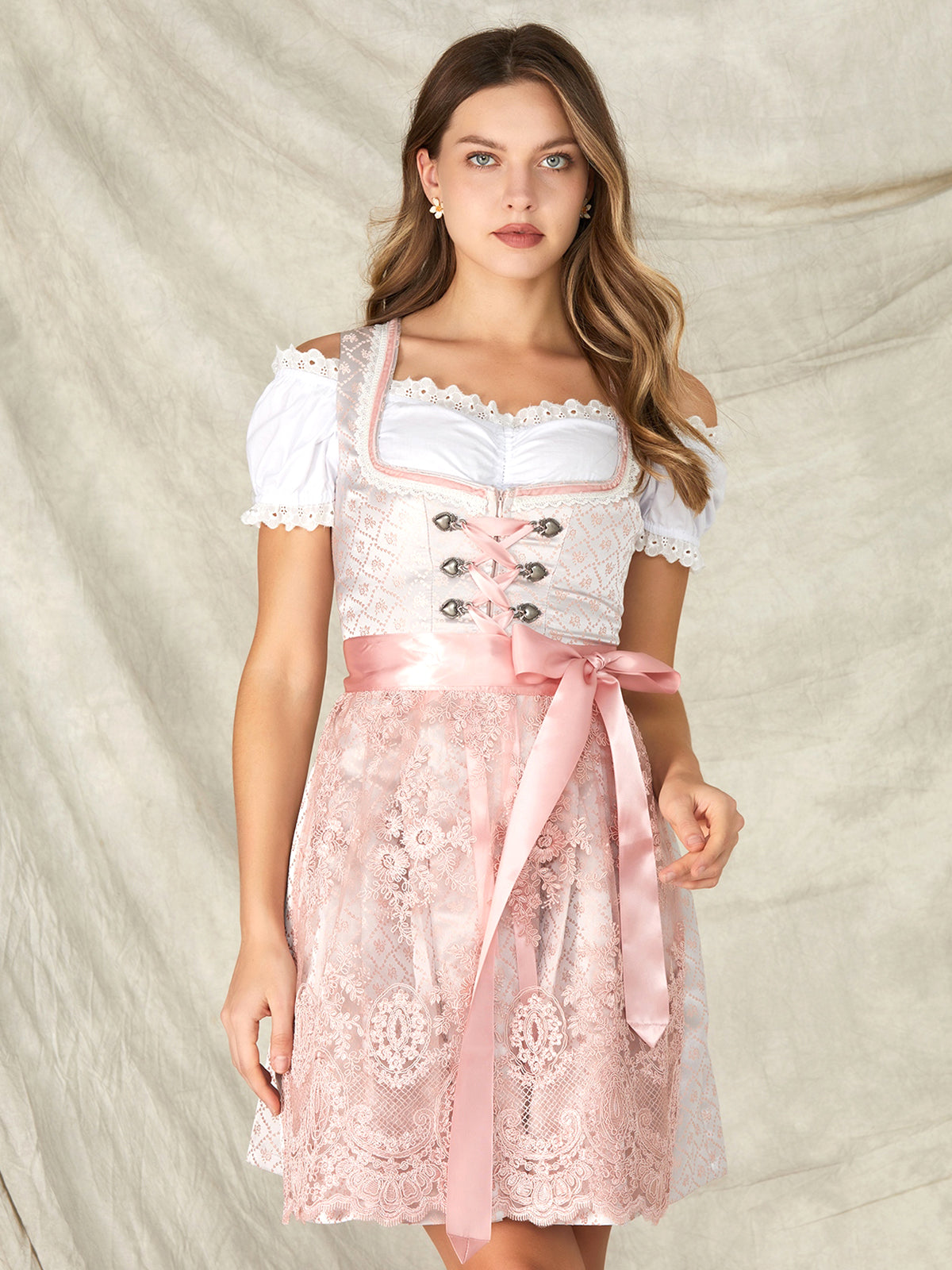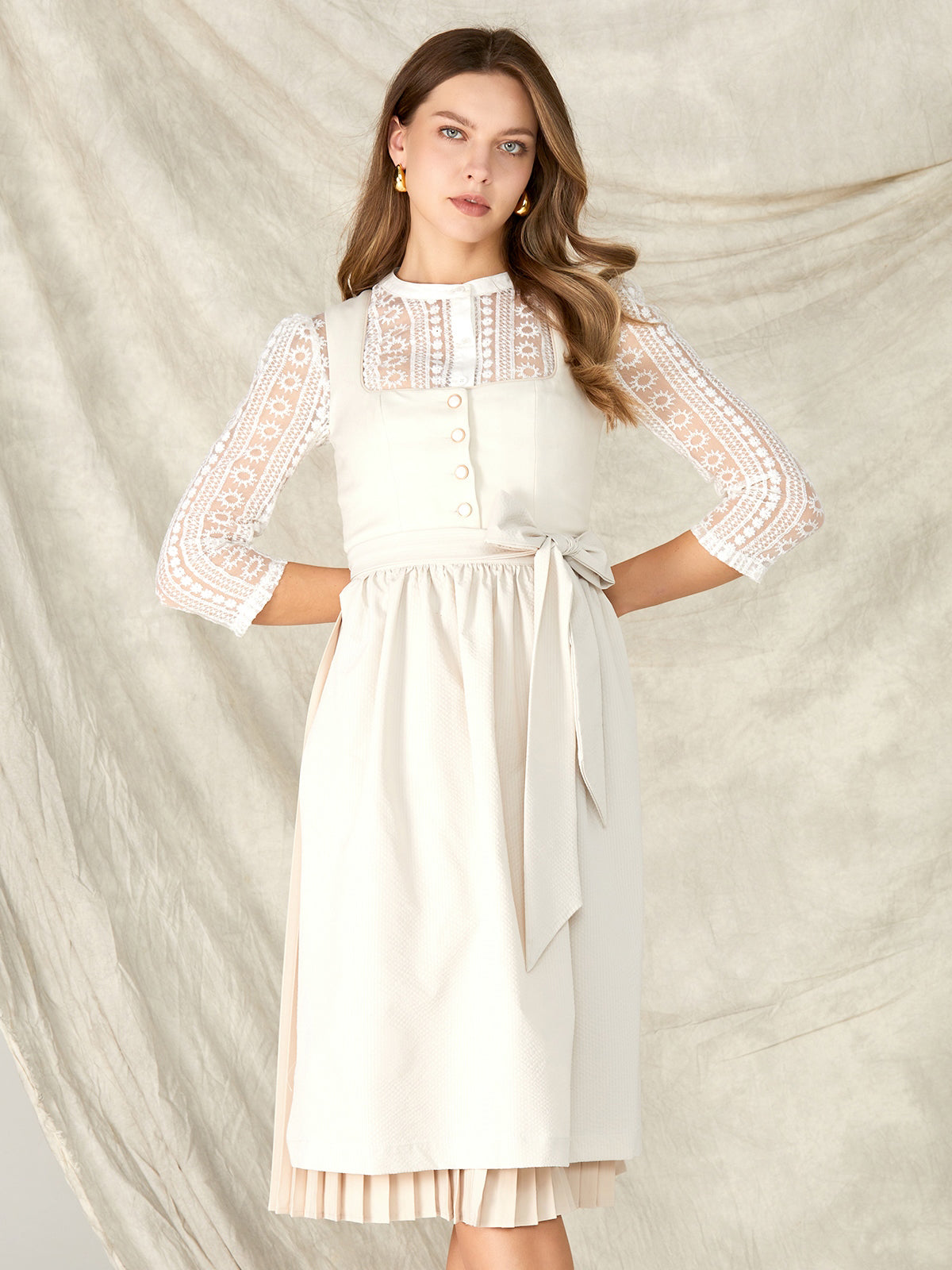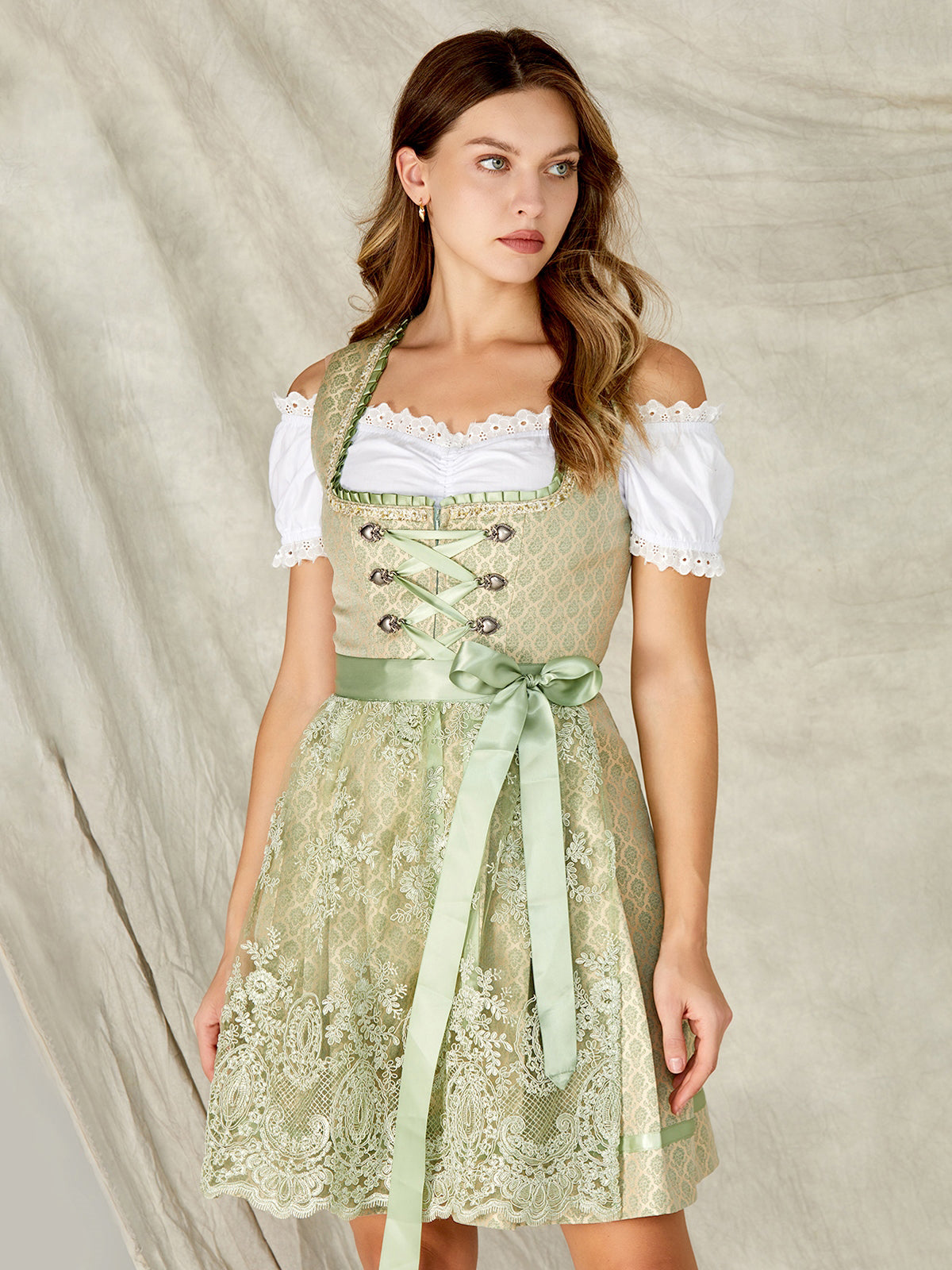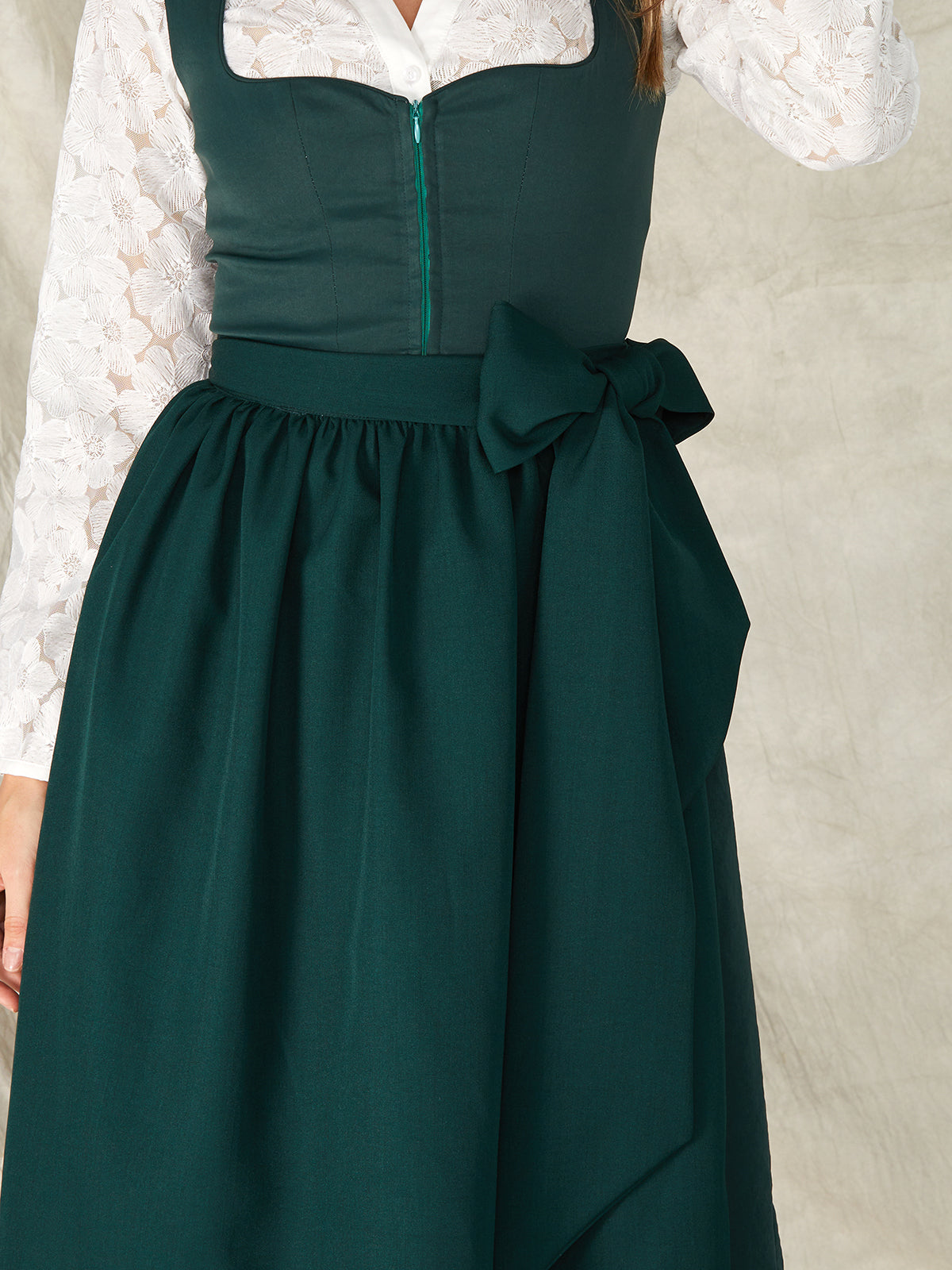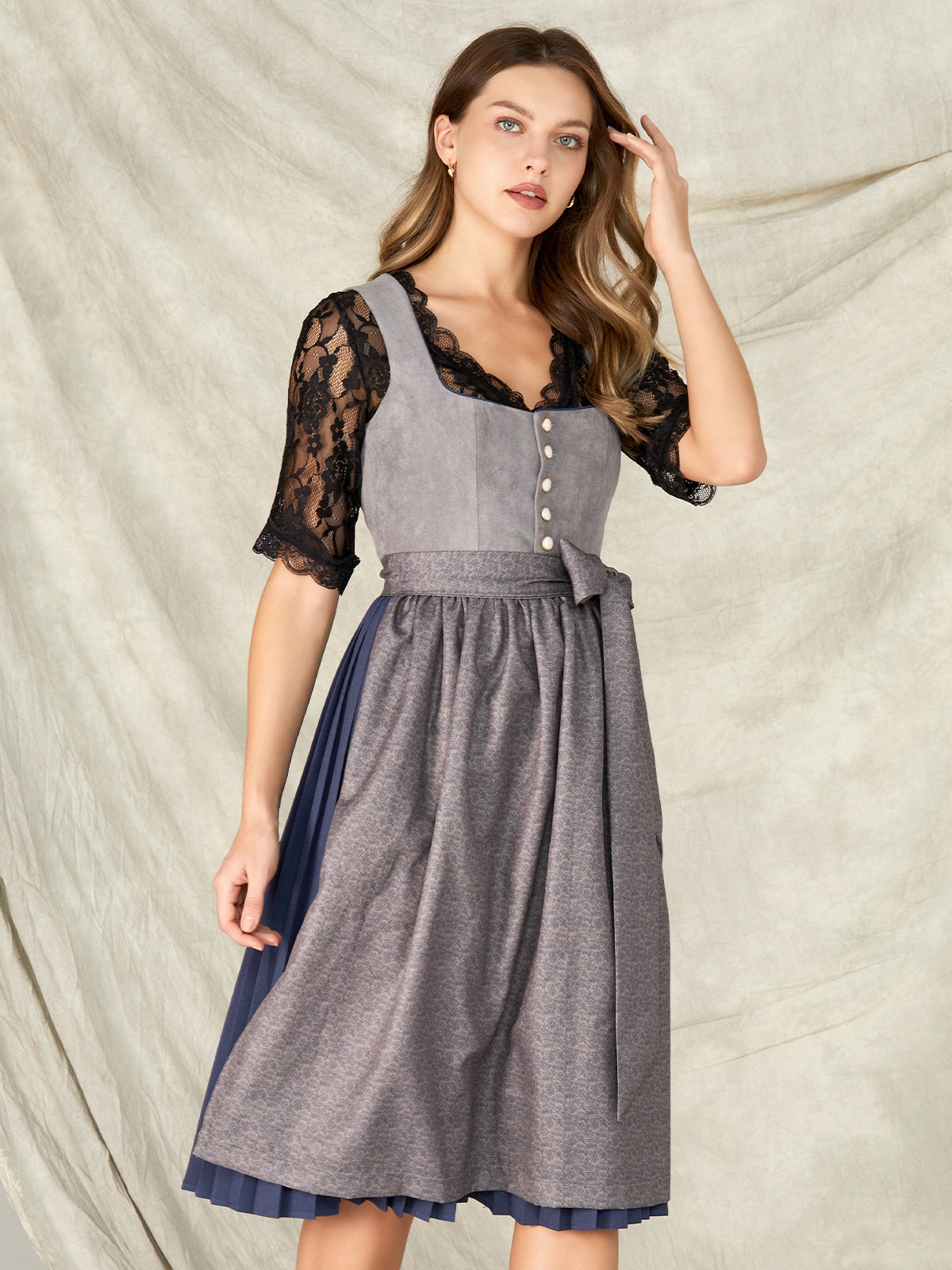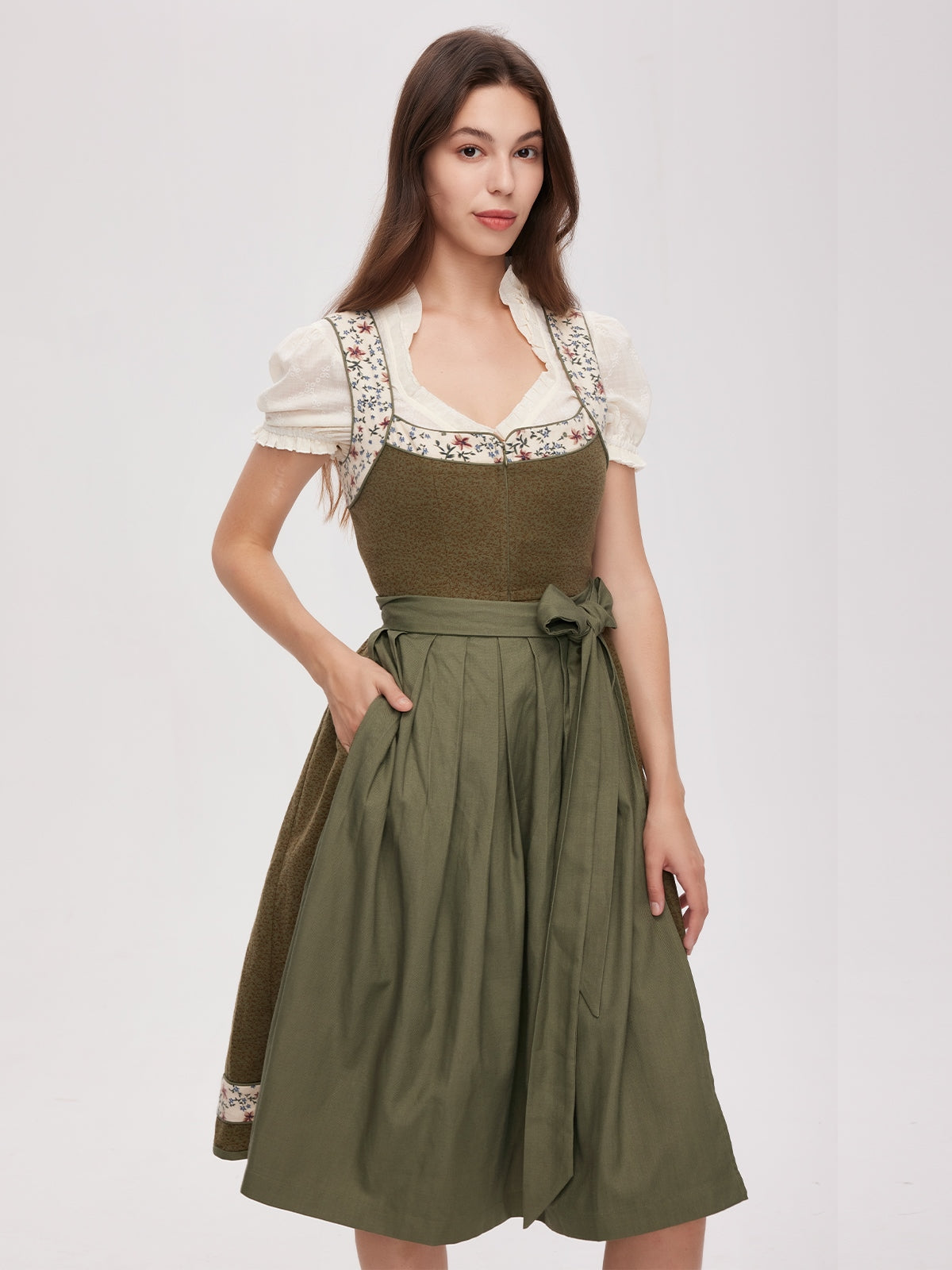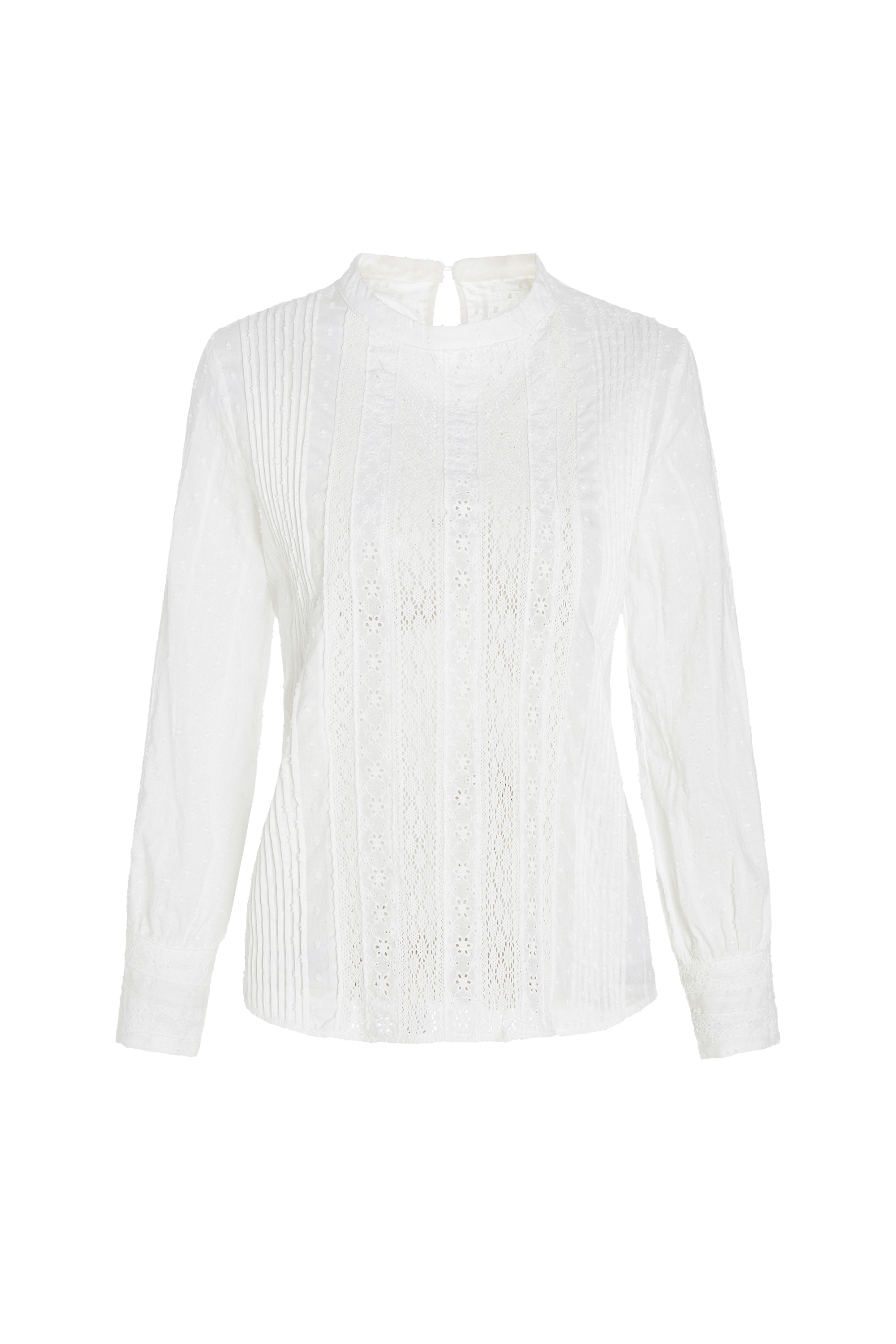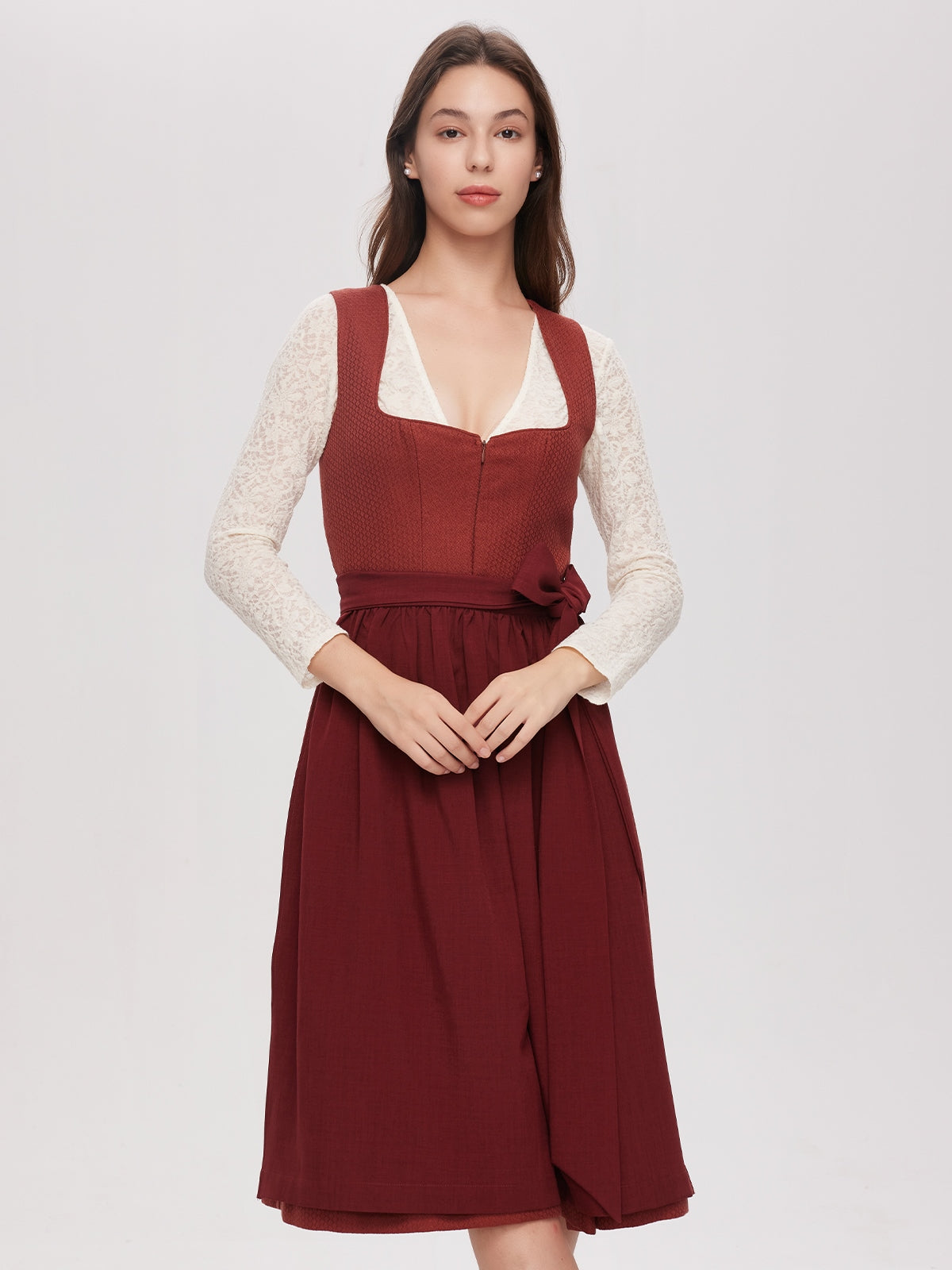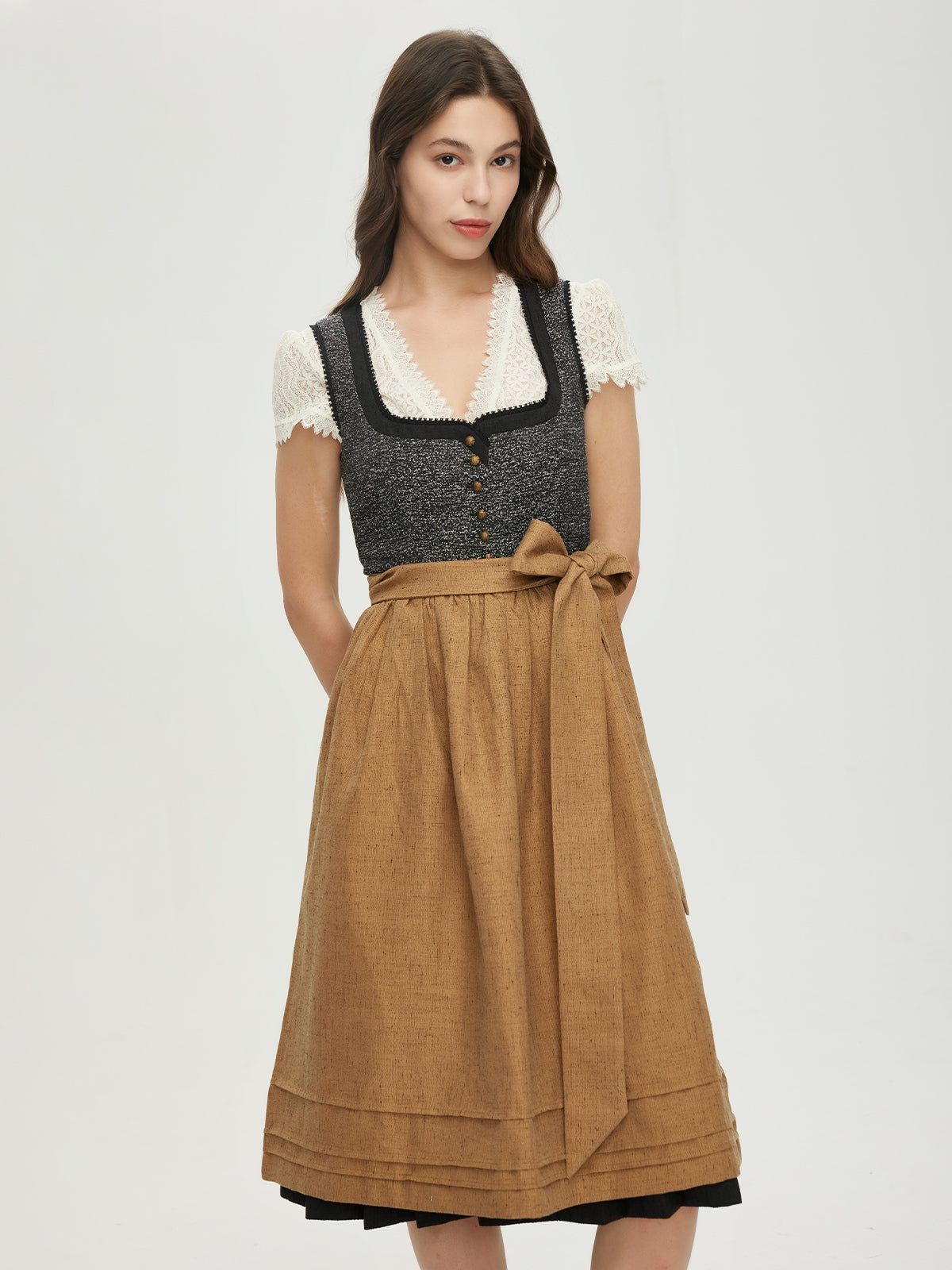The traditional dirndl costume is a symbol of cultural identity and regional distinctiveness in Germany and Austria. While the green and velvet dirndl is deeply rooted in Bavarian tradition, the Austrian folk costume presents its own interpretation, distinguished by its embellishments and materials. The German variant, especially the mint green dirndl, is known primarily for its clean, robust design. In Bavaria, deep green and navy blue colors dominate, often made from high-quality velvet or sturdy linen. These garments are closely associated with annual folk festivals such as Oktoberfest, where the green dirndl is particularly popular.
In contrast, the Austrian dirndl is characterized by a more elaborate design. Embroidery, especially rose motifs, is a characteristic element that adorns the traditional costume. A wide leather belt is also often used as a waist belt, clearly distinguishing it from the German version. Both styles have their roots in the 19th century but developed in different directions. While the German dirndl, green and velvet, has remained rather simple and functional, the Austrian model combines traditional craftsmanship with an elegant aesthetic. These differences reflect not only regional preferences but also the cultural influences that have shaped fashion over the centuries.
Design features in comparison: Bavarian vs. Austrian Dirndl
The Bavarian green velvet dirndl is characterized by its clear, functional design, making it suitable for both everyday and festive wear. These dirndls are typically made of sturdy velvet in deep green or navy blue. The apron is usually a contrasting color, with the position of the bow conveying a stylish message—for example, whether the wearer is married or still looking for a partner. The neckline is usually rounded and can be embellished with a necklace or brooch. The sleeves are available in short or long styles, although long-sleeved versions made of finer fabric are often chosen for festive occasions. The mint green dirndl, on the other hand, is a modern variation that has recently gained increasing attention. It retains the classic shapes of the Bavarian dirndl but differs in its lighter, fresher green tones, which are particularly popular with young women. This model is often a sought-after piece on the green dirndl sale , as it has a both classic and modern feel.
In contrast, the Austrian dirndl is characterized by a more elaborate design, focusing heavily on embroidery and a variety of materials. A characteristic feature is the presence of rose embroidery, which is incorporated along the neckline, the sleeves, or on the apron. These embellishments lend the garment a romantic, almost playful touch that stands out clearly from the simpler Bavarian style. The use of a wide leather belt is another distinguishing feature – a practical but also visually appealing addition that accentuates the waist. While the green velvet dirndl in Bavaria tends to be in dark, earthy tones, light, pastel-colored versions can also be found in Austria, creating a vibrant contrast to the traditional look. The mint green dirndl fits into this category, as it has fans in both Germany and Austria who prefer a modern interpretation of traditional costume.
Both styles have their roots in 19th-century peasant clothing, but developed differently. While the German dirndl established itself as a firm tradition in folk culture, the Austrian model took on stronger influences from the fashion industry and incorporated more luxurious materials. This difference makes the two traditions particularly interesting—not only from a cultural perspective, but also with regard to the individual expression of the wearers.
Cultural significance and regional influences
The color selection for dirndls is by no means arbitrary, but deeply rooted in regional identity. In Bavaria, deep green tones and navy blue dominate, anchored both in the nature of the Alpine foothills and in the historical clothing of the peasantry. The green velvet dirndl represents down-to-earthness and tradition, as these colors were already widespread in peasant clothing in the 19th century. The dark, earthy tones reflect the rural way of life – robust, useful, and yet elegant. In combination with the apron color, harmonious contrasts are created, which are important for both everyday and festive dirndls. The mint green dirndl, in particular, has recently gained popularity, as it combines the classic shape with a modern, fresh touch. It is therefore no coincidence that the green sale dirndl is receiving increasing attention among young women who are oriented towards both tradition and contemporary fashion.
In contrast, the Austrian dirndl is characterized by a more colorful and elaborate design. The rose motifs are not purely decorative but also have a symbolic meaning. The rose, a traditional motif in folk art, represents femininity, elegance, and fertility. These decorations are particularly common in rural regions of Austria and are often hand-embroidered, emphasizing the uniqueness of each piece. The leather belt also plays an important role—it is not only a practical element but also a sign of quality craftsmanship. While the green and velvet dirndl in Bavaria tends to appear in more muted tones, bright, pastel-colored versions can also be found in Austria, creating a vibrant contrast to the traditional look. This demonstrates that the cultural and geographical differences between Germany and Austria are also clearly visible in the color and decoration of dirndls.
Practical application and suitability for everyday use
Comparing the two dirndl styles reveals not only a stylistic but also a functional difference. The green velvet dirndl is particularly suitable for everyday wear due to its robust materials and simple design. The use of velvet or sturdy linen makes the garment durable and ideal for a variety of weather conditions. This explains why it is worn in Bavaria not only at folk festivals, but also at traditional village events and agricultural activities. The mint green dirndl , in particular, has recently established itself as a modern yet practical alternative. Its lighter tones are well suited to the spring and summer months, with the fabrics selected to be breathable and comfortable. This version is especially popular with young women seeking both style and comfort.
In contrast, the Austrian dirndl, with its embroidery and leather belt, appears more like a festive garment. The ornate rose motifs and the use of finer fabrics make it less suitable for everyday wear, but rather for weddings, religious celebrations, or cultural events. The leather belt, although sturdy and elegant, is less flexible than the simpler lacing of the Bavarian dirndl, which can somewhat restrict freedom of movement. Nevertheless, the opulent design of this traditional costume gives it a strong appeal, making it particularly attractive to tourists and those who prioritize aesthetics over functionality. This demonstrates that both traditions have different priorities – the green velvet dirndl emphasizes everyday practicality, while the Austrian model emphasizes festive elegance.

